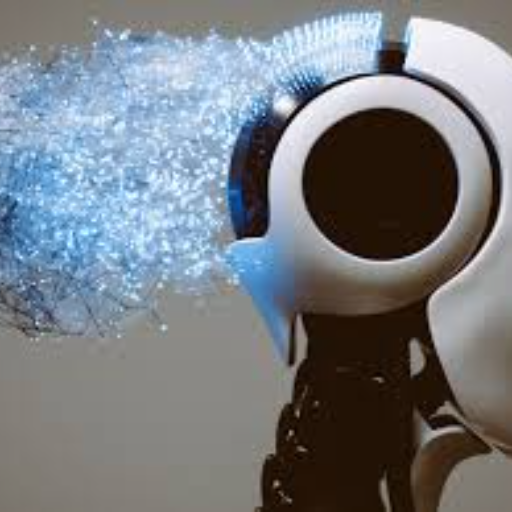Deep Reinforcement Learning-AI-powered decision-making tool
AI-Powered Deep Reinforcement Learning for All
Explain the concept of Q-learning in DRL.
How does policy gradient differ from value-based methods?
Can you provide a solution for this DRL assignment?
What are the latest advancements in DRL?
Related Tools
Load More
Universal Primer
The fastest way to learn anything.
Mr. Ranedeer
Meet Mr. Ranedeer, your personalized AI tutor! Version: 2.7 Reboot

Deep Learning Master
Guiding you through the depths of deep learning with accuracy and respect.

Reinforcement Learning Assistant
I create, explain, and modify RL code.

rox
Create scholarships with learning. Launch a decentralized learning assistant instantly at robotsbuildingeducation.com.

Python Deep Learning Assistant
A GPT to help users with some of the most popular deep learning frameworks.
20.0 / 5 (200 votes)
Introduction to Deep Reinforcement Learning
Deep Reinforcement Learning (DRL) is an advanced machine learning technique that combines Reinforcement Learning (RL) and Deep Learning (DL) to solve complex decision-making problems. RL is a type of machine learning where an agent learns to make decisions by interacting with an environment, aiming to maximize cumulative rewards. Deep Learning, on the other hand, involves neural networks with many layers (deep neural networks) that can learn representations from large amounts of data. By integrating these two fields, DRL leverages the representation power of deep neural networks to handle high-dimensional input spaces and the sequential decision-making capabilities of RL. For example, DRL has been successfully applied to train agents to play video games at superhuman levels, control robotic arms, and optimize complex industrial processes.

Main Functions of Deep Reinforcement Learning
Policy Optimization
Example
Training an autonomous drone to navigate through obstacles.
Scenario
In this scenario, a DRL agent learns an optimal policy for controlling the drone's movements by receiving feedback from the environment (e.g., distance to obstacles, speed) and adjusting its actions to maximize a reward signal (e.g., distance traveled without collision).
Value Function Approximation
Example
Energy management in smart grids.
Scenario
Here, a DRL agent approximates the value function, which estimates the expected future rewards of different actions. This allows the agent to make informed decisions on energy distribution and storage, optimizing the overall efficiency and reducing costs.
Exploration and Exploitation Balancing
Example
Personalized recommendation systems.
Scenario
DRL can be used to balance exploration (trying new recommendations) and exploitation (recommending known preferred items) in a recommendation system. This helps in continuously learning user preferences while maximizing user satisfaction and engagement.
Ideal Users of Deep Reinforcement Learning
Researchers and Academics
Researchers in fields such as artificial intelligence, machine learning, and operations research benefit from using DRL to explore novel algorithms, develop new theories, and conduct experiments. DRL provides a powerful framework for solving complex problems that require sequential decision-making and learning from interactions.
Industry Practitioners
Industry practitioners, including engineers, data scientists, and software developers, leverage DRL to optimize operations, automate tasks, and develop intelligent systems. For example, DRL can be applied in finance for trading strategies, in manufacturing for process optimization, and in robotics for autonomous control.

Steps to Use Deep Reinforcement Learning
Visit aichatonline.org for a free trial without login, also no need for ChatGPT Plus.
Start by accessing the free trial at aichatonline.org to explore the capabilities of Deep Reinforcement Learning without any initial cost or commitment.
Set Up Prerequisites
Ensure you have Python installed along with essential libraries such as TensorFlow or PyTorch. A basic understanding of reinforcement learning concepts and familiarity with deep learning frameworks is highly recommended.
Choose or Create an Environment
Select an appropriate environment for your DRL project. Popular choices include OpenAI Gym for various standard environments or custom environments that suit specific needs.
Implement the DRL Algorithm
Implement a suitable DRL algorithm such as DQN, PPO, or A3C. Use existing frameworks or customize your implementation based on the specific requirements of your project.
Train and Evaluate the Model
Train your model using the chosen environment and algorithm. Monitor the training process, adjust hyperparameters as needed, and evaluate the model's performance using relevant metrics.
Try other advanced and practical GPTs
Lora
Your AI-powered personal assistant

金融助手
AI-powered Financial Learning Tool

UI/UX Design Portfolio Builder
AI-powered tool for stunning portfolios

Analisis De Datos De Excel
AI-Powered Insights for Smarter Decisions

Mobile App Mockup Designer
AI-powered mobile app mockup designer

Kali Linux Pro Guide
AI-powered Kali Linux guidance.

Deep Learning Code Mentor
AI-powered Deep Learning Guidance.

Neo4j Cypher Wizard
AI-powered Cypher query generation.

Su's Work Space
AI-powered tool for seamless development.

network
AI-powered network assistance.

Scene Prompt Creator
AI-powered scene prompt generation tool

Public Insight CPV Code Explorer
AI-Powered CPV Code Analysis
- Automation
- Finance
- Gaming
- Healthcare
- Robotics
Deep Reinforcement Learning Q&A
What is Deep Reinforcement Learning?
Deep Reinforcement Learning (DRL) is a subfield of machine learning where agents learn to make decisions by interacting with an environment. It combines reinforcement learning with deep learning to handle high-dimensional inputs like images.
How does DRL differ from traditional reinforcement learning?
While traditional reinforcement learning relies on manually crafted features, DRL uses deep neural networks to automatically learn feature representations, making it more scalable to complex tasks involving high-dimensional data.
What are common use cases for DRL?
DRL is used in various applications including robotics, game playing, autonomous driving, financial trading, and personalized recommendations. It excels in scenarios requiring sequential decision-making under uncertainty.
What are some popular DRL algorithms?
Some widely used DRL algorithms are Deep Q-Network (DQN), Proximal Policy Optimization (PPO), Asynchronous Advantage Actor-Critic (A3C), and Soft Actor-Critic (SAC). Each has unique strengths and is suited for different types of problems.
What are the main challenges in DRL?
Key challenges in DRL include sample inefficiency, stability of training, exploration-exploitation trade-off, and generalization to unseen environments. Advanced techniques and careful tuning are often required to address these issues.